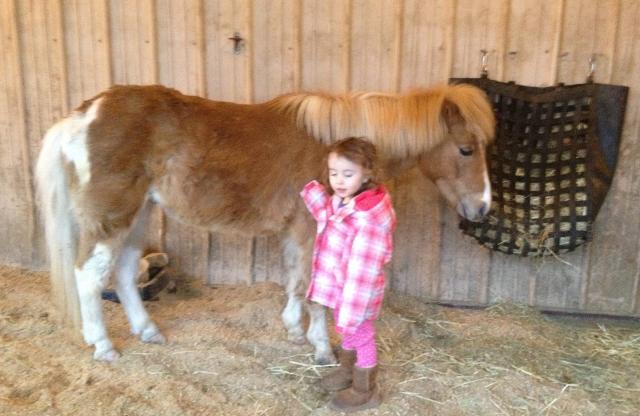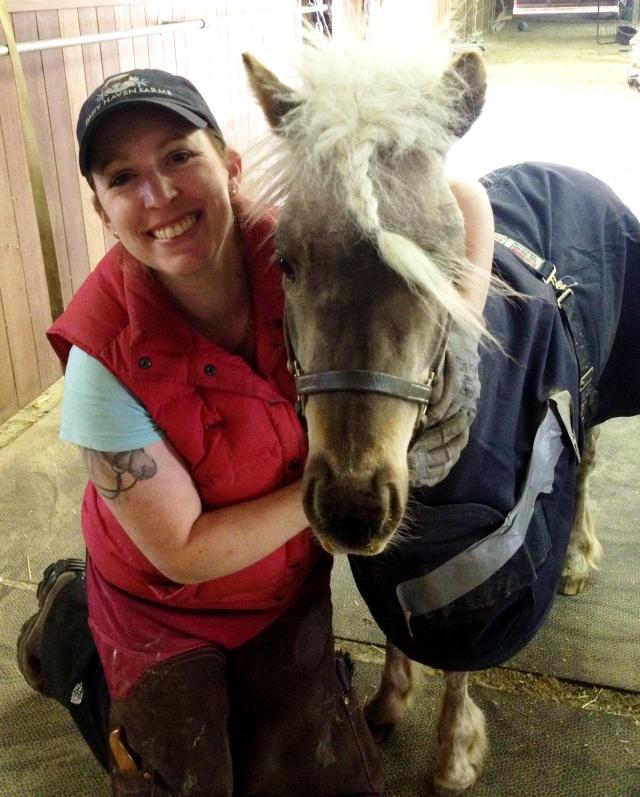I am often asked to trim a small pony or mini and many times the expectation is that the fee should be less for them than a normal sized horse. Whether that’s because the feet are smaller, or the owners just don’t want to spend the money on these companion animals, it is in no way easier to work on them! If you’ve ever seen the range of awkward positions the farrier has to get in to work on their feet, you’ll know what I mean.
Combine that with how many of these small ponies and minis are foundered, the farrier definitely doesn’t have an easy time of it.
In previous blogs I have written about two sets of guidelines I use to help me rehabilitate foundered horses. It is no different with ponies:
1. Trim guidelines based on correcting phalangeal and capsular rotation, in other words realigning the hoof capsule with the bones:
- Trimming for a 3-8 degree palmar P3 angle.
- Creating a 50/50 base of support from toe to heel around the center of articulation, approx. Duckett’s Bridge.
- Minimizing flare and distortion.
2. From Dr Eleanor Kellon: DDT & E:
- Diet: providing an appropriate amount of forage and from safe sources. Ponies can have ideal body condition too!
- Diagnosis: working closely with the veterinarian to accurately diagnose the problem and create a management program as a team.
- Trim: following the above guidelines.
- Exercise: when appropriate, these ponies need exercise to stay healthy.
I’ve also found that having the right tools will greatly help you work on small ponies successfully! Smaller and specialized tools can often help. Also, as the foundered pony is often footsore, we rarely have as much time to work on them as we would like. I’ve found certain tools help make the work go much faster.
Below is a 13 year old pony gelding I worked on recently who was getting a good trim from a good farrier, but they were just having trouble getting ahead of this pony’s foot issues.
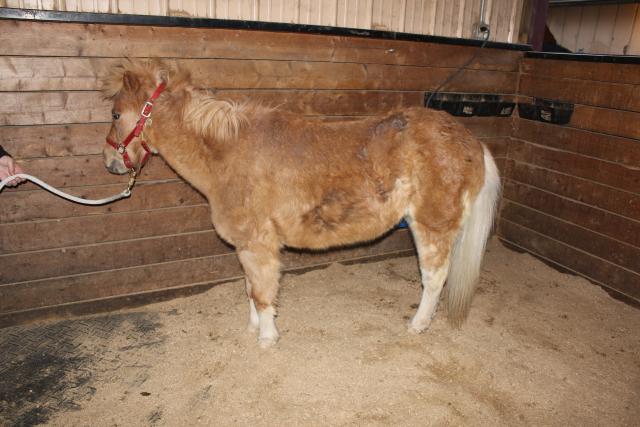
Following our formula:
- Diet: This pony’s diet was well controlled, note his excellent body condition and lack of fat pads
- Diagnosis: Because this pony was still footsore, the veterinarian conducted a thorough exam and re-checked bloodwork for insulin resistance and Cushings disease. As bloodwork was normal, and body condition good, the recommendation was to be more aggressive in the hoof realignment process.
- Trim: The internal and external hoof alignment was not within our parameters.
- Exercise: Only exercise that was appropriate for this pony was moving around a small paddock under his own steam.
Here are his feet when we started:

One of the most critical steps I’ve found in being successful with realigning the hoof capsule and the internal structures is to clip the hair away from the coronary band and pastern. Typically there is a lot of foot hiding up under their long leg hair! Look at how the appearance of the foot changes when the hair is clipped away:
To remove the hair you can use clippers or scissors.


Be careful not to put your head or hands anywhere they can accidentally kick or step on you. Especially watch the front knees – if they pick their leg up quickly they can easily knock you in the head. I highly recommend you stay to one side of their body when clipping at all times and place your hand or even your head directly on their knee.
In working to achieve my trim goals, I believe it is critical to realign the hoof capsule around the internal structures and establish alignment of the hoof pastern axis as quickly as possible. I am often able to achieve those goals in one trim. Here are this pony’s before and after radiographs on his front feet to give you an idea of the change of alignment possible in one trim:
Right Front Before and After Trim:
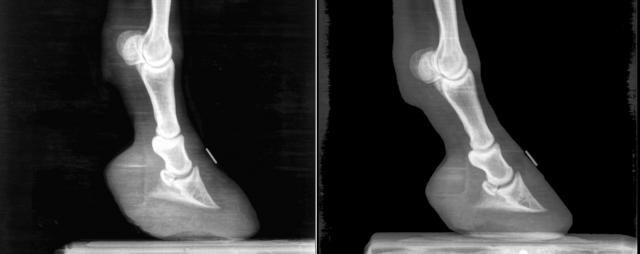
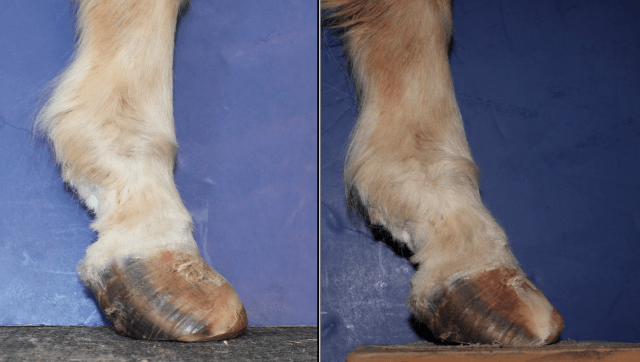
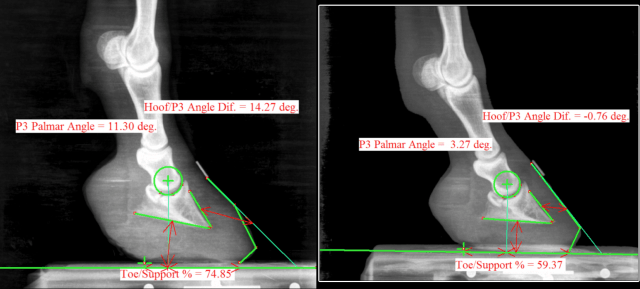
Right Front parameters Before and After Trimming:
Palmar P3 Angle: 11.30 degrees to 3.27 degrees (goal 3-8 degrees)
Toe Support %: 74.85% to 59.37% (goal 50%)
Minimize flare and distortion: Hoof/P3 Angle Difference: 14.27 degrees to -0.76 degrees (goal 0 degrees)
Hoof capsule is centered around P3 again, and Hoof/Pastern alignment is straighter.
Here is the Left Front Before and After Trimming:
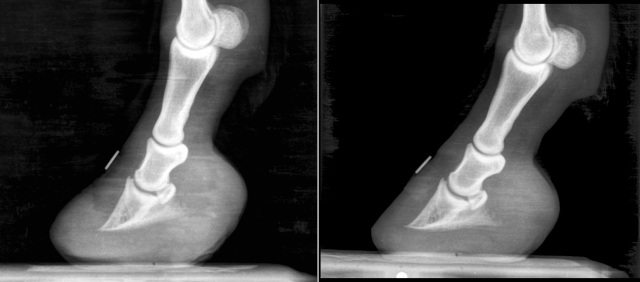
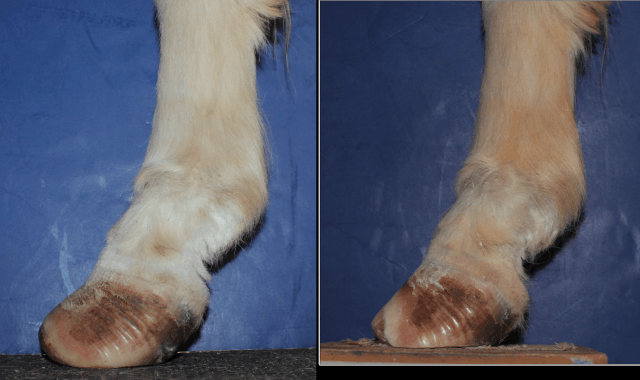

Left Front parameters Before and After Trimming:
Palmar P3 Angle: 11.05 degrees to 3.30 degrees (goal 3-8 degrees)
Toe Support %: 65.01% to 55.35% (goal 50%)
Minimize flare and distortion: Hoof/P3 Angle Difference: 11.05 degrees to 0.66 degrees (goal 0 degrees)
Hoof capsule is centered around P3 again, and Hoof/Pastern alignment is straighter.
This realignment process is best accomplished with digital radiographs for accuracy.
Removing the laminar wedge (dish in the wall at the toe), and lowering the heels in the realignment process can be very hard work! Here are a few tools that can make the process faster and ease the pony’s discomfort:
12″ Half Round Nippers can be very helpful when lowering the heel and frog height in the back of the foot to lower the palmar P3 angle. It can be quite difficult to get into this area with straight nippers, and exhausting with a rasp. Especially when the pony is foundered, their feet often become referred to as “foot bound” or “blocks of wood” for a good reason! They are very tightly packed together and difficult to get into with our farrier tools. Half round nippers give a tremendous mechanical advantage.

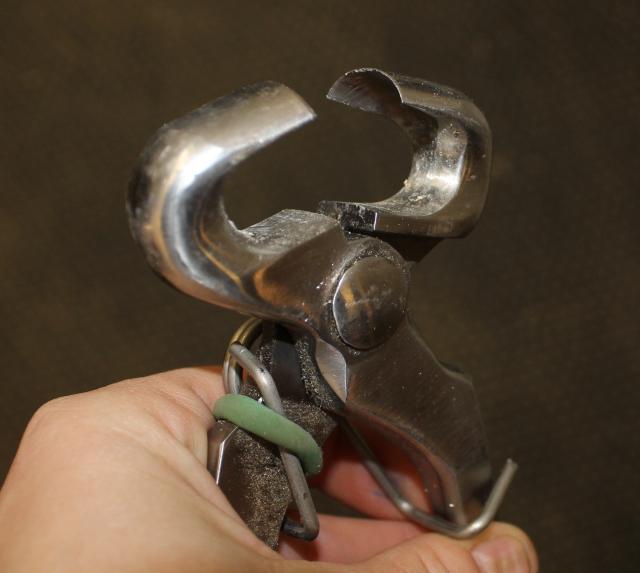
Using Half Round Nippers at the back of the foot to reduce the heel height, and also on the laminar wedge to create better capsular alignment.

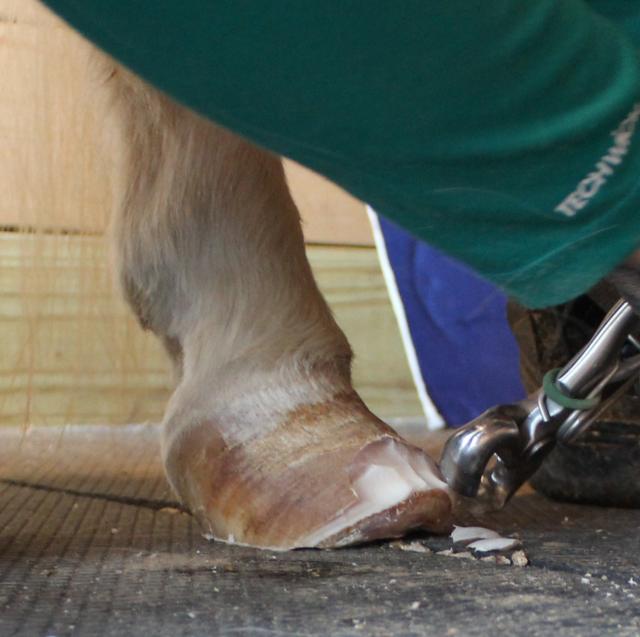
12″ Half Round Nippers are made by a number of tool manufacturers. Mine are made by MFC Tool, although GE also makes a nice pair.
The other tool that I find extremely helpful is a Makita 1 1/8 x21″” hand held belt sander. This tool is fantastic for reducing the laminar wedge without having to pick the pony’s foot up off the ground.
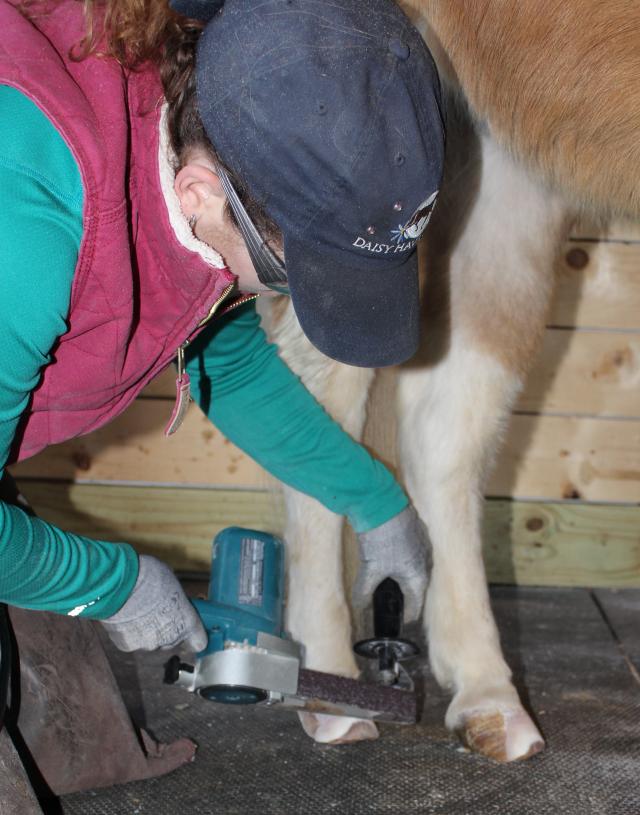
I like this tool better than an angle grinder or other similar powertools because it is similar in use to my rasp. I can feel the plane of the foot with the belt sander the same way I would use my rasp on a flare or other wall distortion. I also like that I can leave the pony’s foot on the ground which is easier for them when footsore. As a side note, I also like to use this tool on draft horses with flare or bigger horses when addressing the laminar wedge. Saves me a lot of work, and the animal a lot of discomfort!
Fixing foundered ponies can be a frustrating process, full of hard work. While these trimming tips and tricks alone won’t fix the pony, they sure do make the job a lot easier on everyone involved. This pony documented here is just at the beginning of his rehabilitation here at Daisy Haven Farm, Inc., however in my experience trimming him to these parameters will help him become much more comfortable very quickly assuming the rest of our protocol: DDT & E is in line as well. Over the next few months his laminar wedge will continue to diminish until he regains a tight white line, and he will also regain concavity in his soles. He will be one very happy, sound pony!

